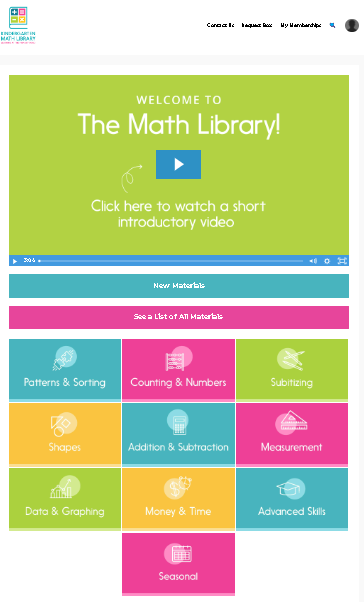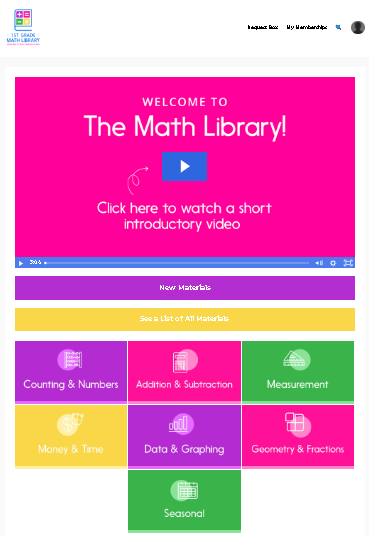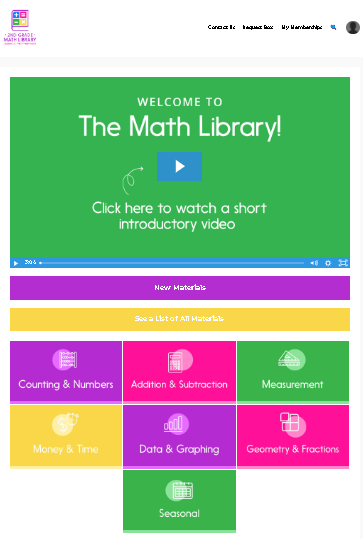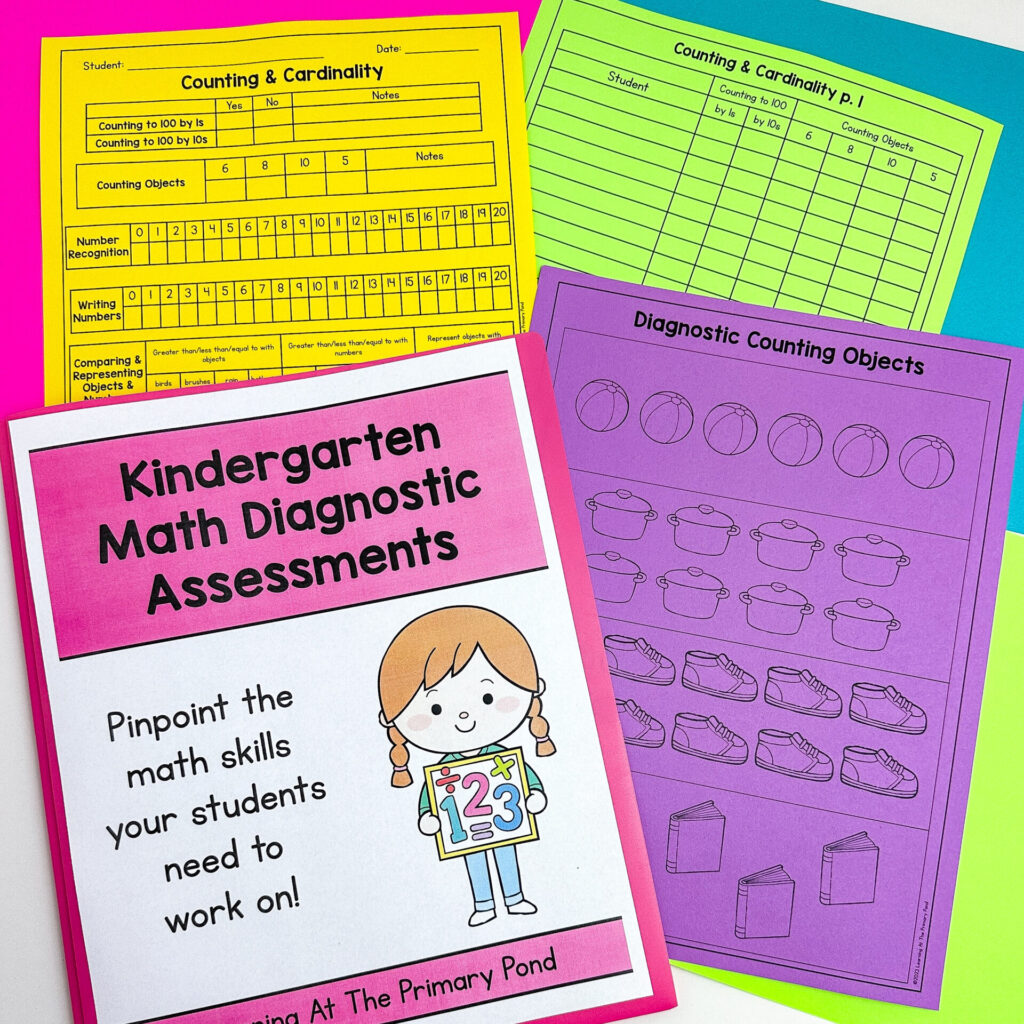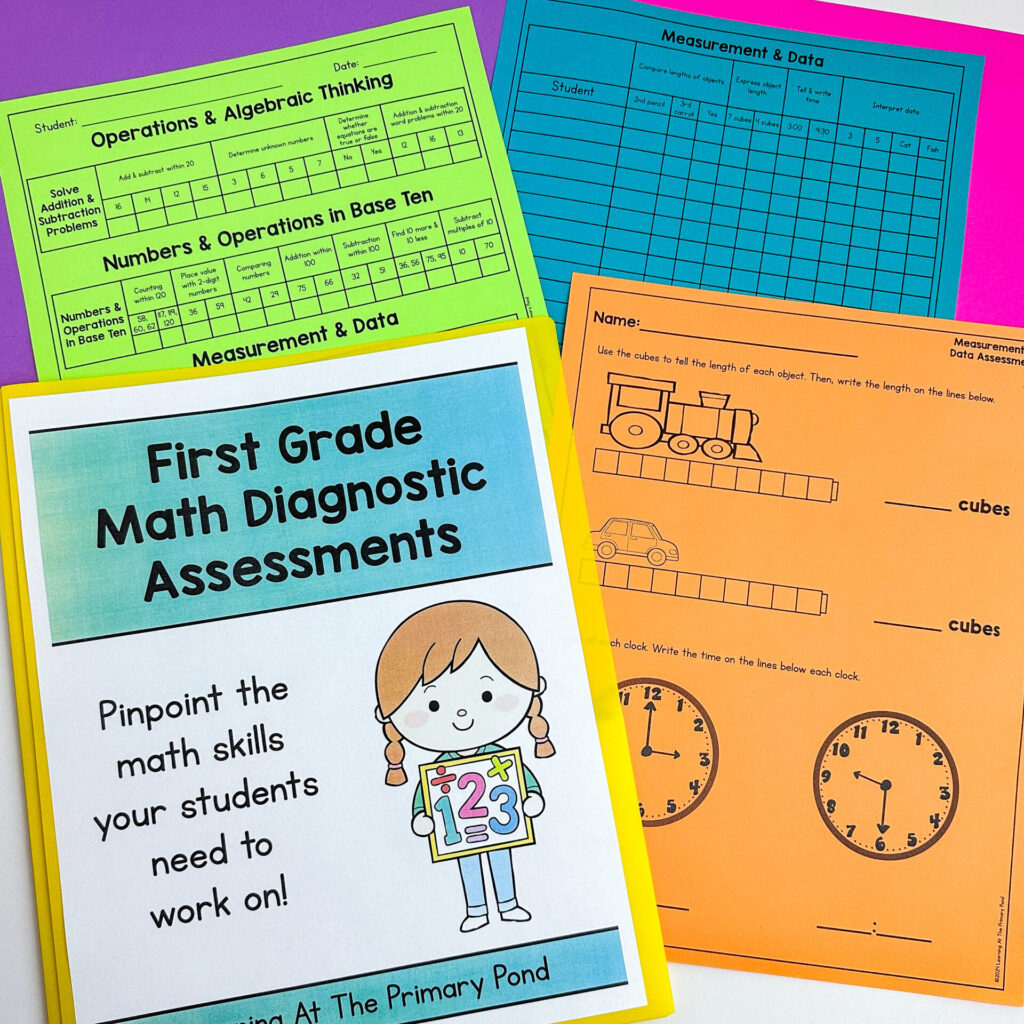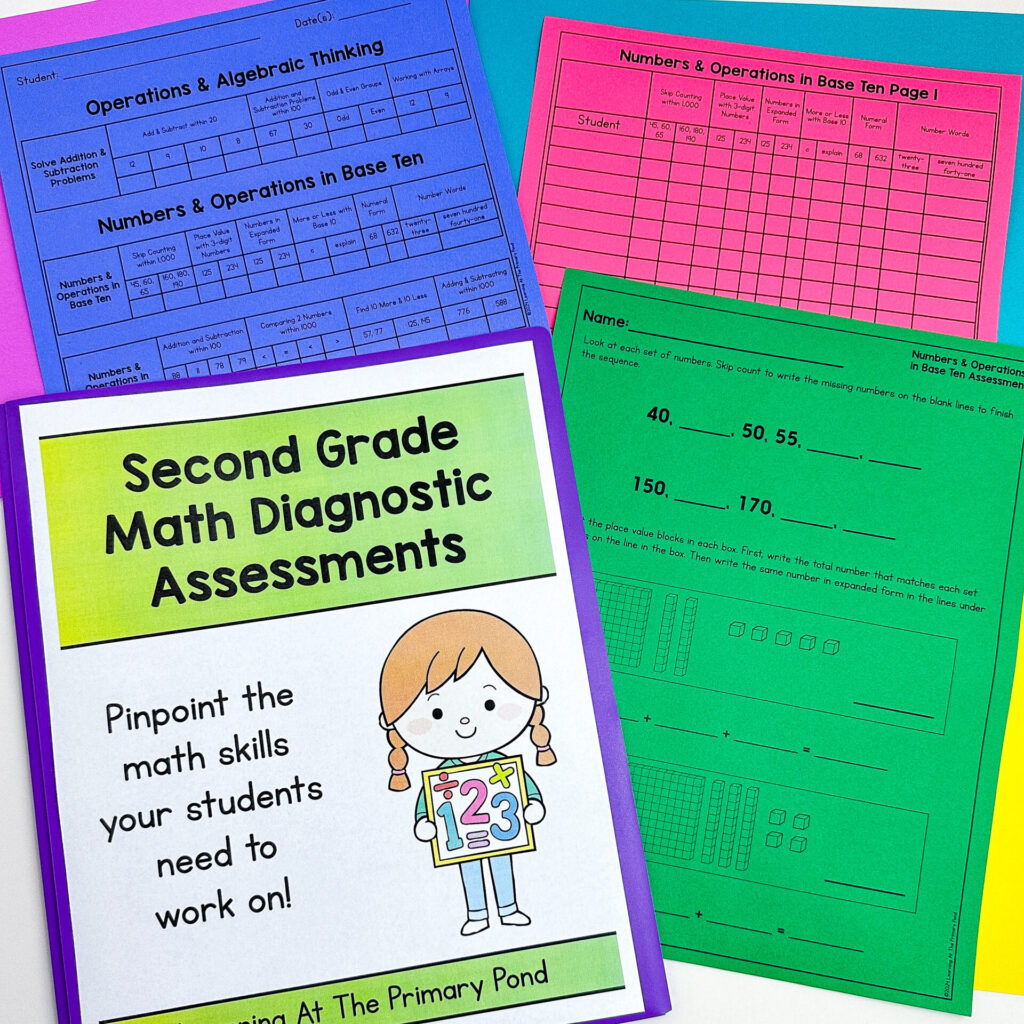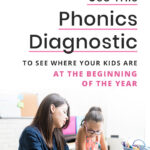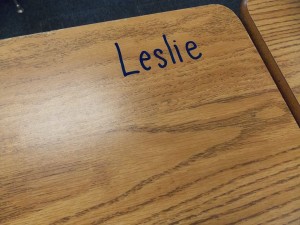How do you identify students’ strengths and areas of growth in math? How do you meet this big range of needs? Having a math diagnostic assessment that’s easy to use AND provides data that’s easy to understand is key. You’ll also want the information to be transferred into clear, actionable steps.
In this post, I’ll go through a free math diagnostic assessment I offer. I’ll explain how to use it, the different components, and most importantly, what to do with the information once you’re done.
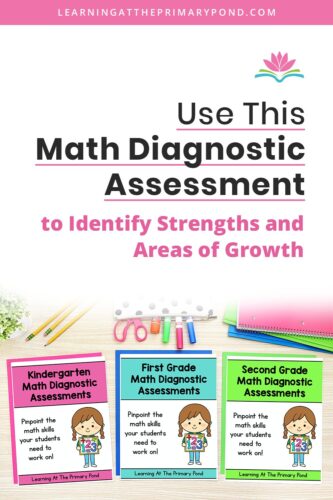
What Is A Math Diagnostic Assessment?
A math diagnostic assessment is used to “diagnose” or identify the strengths and areas of growth of students in your classroom. The assessment should help you determine exactly what math skills students are proficient in. Then, based on each student’s results, you can identify math skills students already know, as well as skill gaps.
This is incredibly valuable because the results will give you the exact next steps to help kids move ahead in math!
This free math diagnostic includes an assessment for Kindergarten, 1st grade, and 2nd grade.
Here are the broader categories covered in the Kindergarten, 1st grade, and 2nd grade assessments:
- Operations & Algebraic Thinking
- Number & Operations in Base Ten
- Measurement & Data
- Geometry
**Kindergarten also covers the category of “Counting & Cardinality.”
For every section, there are teacher directions so that you can plan accordingly:

Then, of course, there are materials for students to complete as they are being assessed! Here are some examples from the Kindergarten, 1st grade, and 2nd grade assessments:
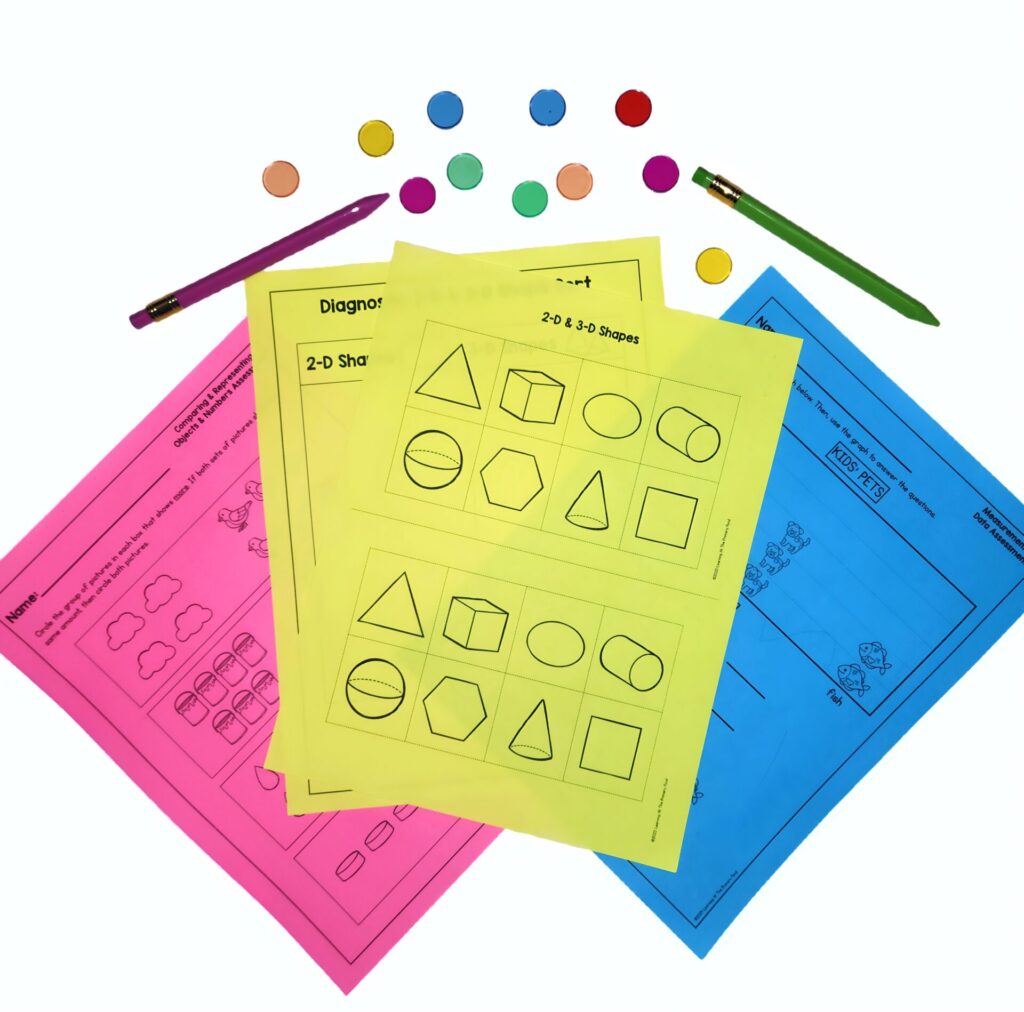
Many of the components can be given in a large or small group setting (such as circling which group of items has more/less), whereas some components should be administered in a one-on-one setting so that you can get accurate data for individuals.
Collecting Data
There are a variety of ways you could use this free resource. Use the math diagnostic assessment:
- as a pretest to see what skills students have before teaching a unit
- as a summative assessment at the end of a unit
- at the end of the school year to see what skills students have mastered or are still developing
- at the beginning of the year to see which skills students have mastered/need support with for the upcoming school year **(For this option – if you are a 1st grade teacher, for example, you’d probably want to use the Kindergarten assessment to get an accurate picture of what students have already mastered, since students wouldn’t have been taught the 1st grade skills yet.)
This resource has options for teachers to mark students’ answers on either a single assessment scoring sheet or a multi-student assessment scoring sheet. See examples of each here:
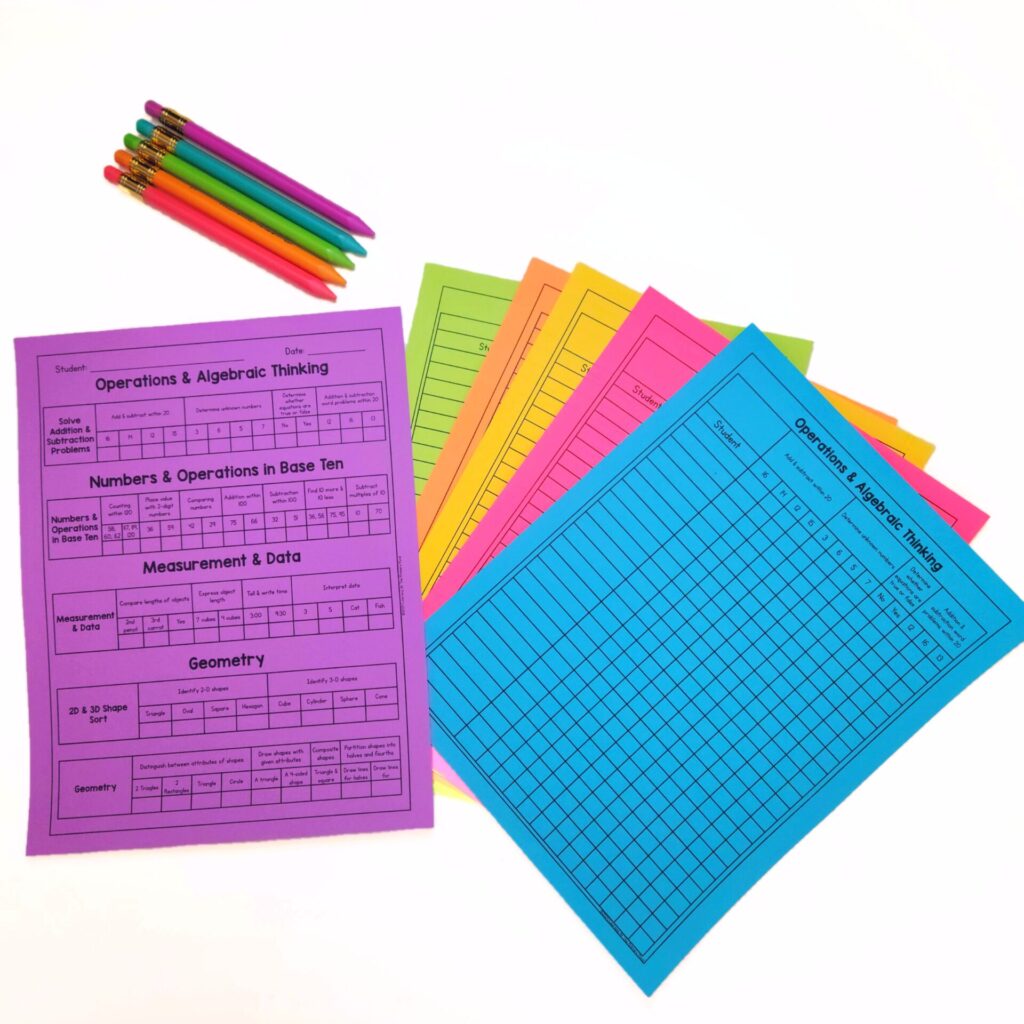
Some teachers prefer one or the other. Some even like to start with the single and then transfer to the multiple, so I wanted to offer both options!
You’ve Completed The Diagnostic – Now What?
After completing the math assessment for your student(s), you’ll have lots of information at your fingertips! You’ll see things that students were able to do, but also most likely skills that students aren’t familiar with.
We can look at this data through a waterfall analogy. We can start big picture, trickle down to group trends, and then end with individual takeaways. Here’s a list of questions you should ask yourself (and write down answers to) when reflecting on the data:
- What are some strengths our class has as a whole? (at least 2/3 of the class was able to do)
- What are some areas of growth our class has as a whole (at least 2/3 of the class wasn’t able to do)
- Are there certain skills that a group of students is really advanced in? (i.e. five Kindergarten students were able to compose teen numbers)
- Are there certain skills that a group of students had trouble with? (i.e. six 1st grade students weren’t able to count a group of objects up to 10)
- Are there individual students who are advanced in particular skills? (i.e. one Kindergarten student could add/subtract two digit numbers)
- Are there individual students who are fairly behind in certain areas? (i.e. one 2nd grade student who can’t identify 2-D shapes)
Answers to these questions will help you determine which type of instruction you should do in whole group, small group, and 1:1.
If a majority of your class is at (more or less) the same starting point, you’ll be able to do a lot of your instruction whole group. This will help maximize the instructional time your students are getting to cover the same skills.
However, if your class has a pretty wide variety of skill levels, you’ll most likely want to be doing a lot of (but not necessarily all of) your math instruction in a small group setting. This will allow you to tailor each small group lesson around a different skill that matches the ability level of the group.
If you’re seeing some individual outliers (high and low), you’ll want to make notes of how you can incorporate this one-on-one instruction throughout the day/week. Maybe you can provide differentiated materials to this student during math time. If you have an aide, they can pull the student to work on the specific skills.
Materials To Use For Instruction
Trying to find or create materials for a vast array of abilities can be difficult and time-consuming! That’s why I developed my Math Library. The categories covered in the Math Library mimic the skills addressed in the math diagnostic. Each Math Library is organized into different categories (like “Addition and Subtraction”) for easy downloading.
There are tons of different types of resources in each of the Kindergarten, 1st grade, and 2nd grade libraries- worksheets, games, hands-on materials, Google slides, etc! New activities are added each month, and you’ll receive an email letting you know that fresh materials are ready for you!
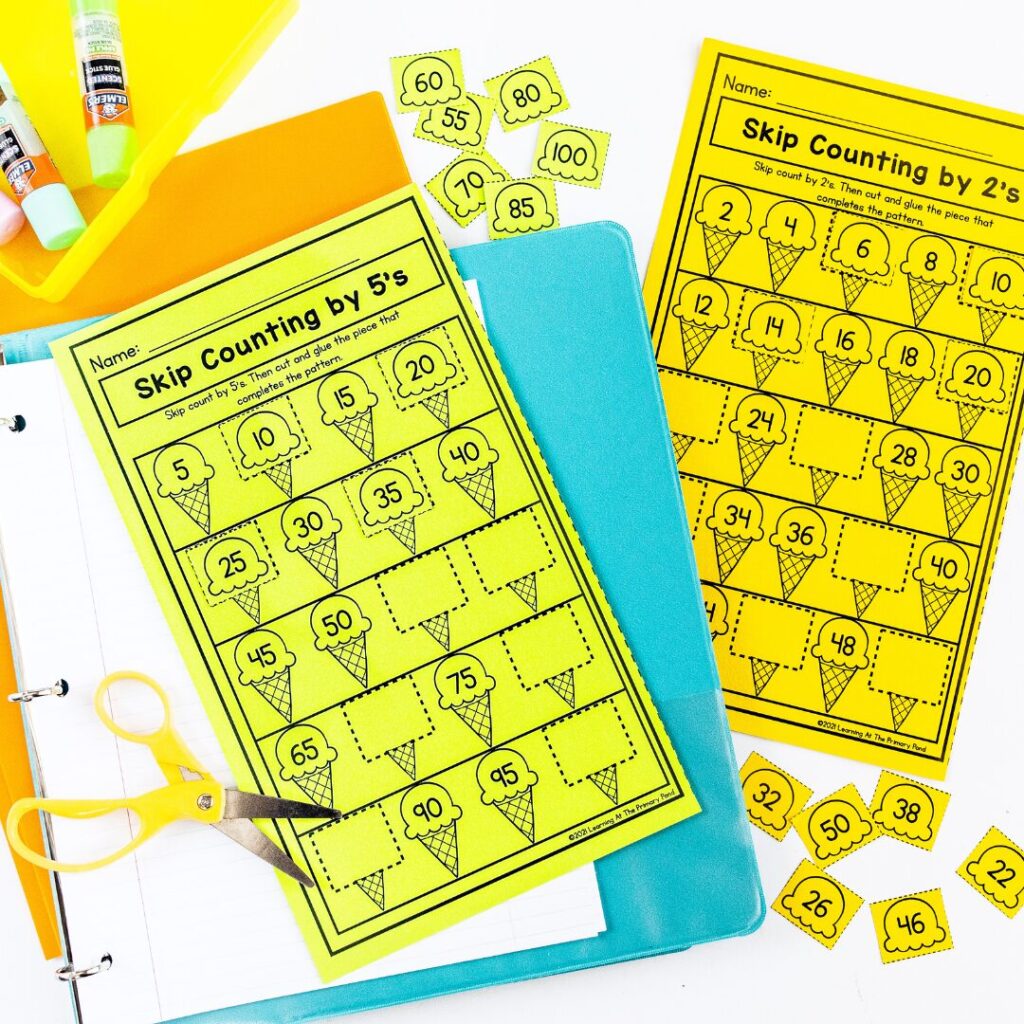
Conclusion
Having a math assessment will provide you with the necessary tools to identify student strengths and areas of growth. Click here to get access to my FREE math diagnostic assessment!
Happy teaching!

